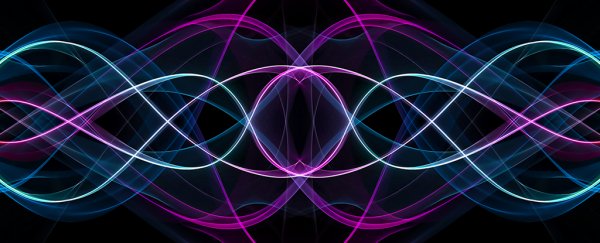Quantum computers based on the twisting pathways of moving particles have so far lived only in theory – the particles they would rely on might not even exist.
But with the exciting discovery of electrons 'swirling' down a wire, the hunt is over for exactly the particles such quantum devices have been waiting for. Now the work of turning these theoretical computers into reality could soon be underway.
Researchers from the University of Sydney and Microsoft have observed electrons forming a kind of matter called a quasiparticle under conditions that saw them behave as theoretical objects called Majorana fermions.
To break it down a little, quasiparticles are particle-like properties that emerge out of the interactions within a complex system. While they don't belong to the big zoo of real particles, their properties affect matter enough to be considered useful.
In 2012, scientists observed quasiparticles that resulted from the movements of electrons. These had a rather unusual feature – in spite of being made up of negatively charged electrons, they behaved just like neutral particles that were also antiparticles.
A similar experiment conducted recently also made for a solid case of these odd kinds of quasiparticles.
Neutral 'matter-and-antimatter-in-one' particles were predicted to exist 80 years ago by the physicist Ettore Majorana.
While some particles such as photons can be considered their own antiparticle, scientists have tried finding fermions – a family that includes electrons and quarks – that also fit the bill.
So far they've come up empty handed. But these Majorana-like quasiparticles are the closest scientists have come.
In spite of not being bona-fide standard-model particles, they would still be perfect for a starring role in a device called a topological quantum computer.
Topological quantum computers are machines that use the weaving movements of neutrally charged particles through two-dimensional space as quantum states.
Just like the quantum 'spin' used in all other forms of quantum computing, the twisting paths, or braids, traced by these particles can also be in one of two states as well as a blurry superposition of both.
While we're making significant progress on scaling up quantum computers that rely on atoms held in ion traps or electrons in superconductors, topological quantum computers would have one distinct advantage.
The states represented in the particle's braids are far more robust than other quantum properties such as an electron's spin.
In other words, topological quantum computers would make much more solid calculators, producing fewer errors that would need to be corrected for in other systems.
The drawback is these kinds of machines would require well controlled electromagnetic environments. That, and the physics behind them is still something of a wild frontier.
"This is practical science at the cutting-edge," says David Reilly, director of Microsoft's Station Q.
In their study, the researchers observed an electron acting in a rather un-electron-like way as it moved down a thin wire.
Usually the quantum state of spin (which isn't quite the rotation of the particle, but is a value ascribed by angular momentum) in an electron isn't associated at all with its motion.
Confined to a narrow enough material such as a nanowire, and then subjected to the right kind of magnetic field, the spin and movement were seen to spontaneously link up.
That means electrons with opposite spins will also have opposite helical twists as they dance down the wire, making them behave like the kinds of two-dimensional quasiparticles needed for a topological quantum computer.
"This information is consistent with previous reports observing Majorana fermions in these nanowires," says researcher Maja Cassidy, from University of Sydney.
Not only is this great news for quantum computing, the discovery could have a role in just about any so-called spintronic system, where the quantum spin of a particle is used to communicate information rather than its electrical charge.
We won't be seeing a functioning topological quantum computer any time in the near future.
Nonetheless, it's a good sign that engineers are on the verge of making the braids that would form the foundations of one, putting one more horse in the race for a new class of superfast computing technology.
This research was published in Nature Communications.
